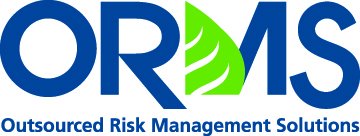5 Top Environmental Remediation Problems, and How to Fix Them
5 Top Environmental Remediation Problems, and How to Fix Them
Commercial real estate (CRE) lending is a risky business. Environmental contamination is one potential pitfall lenders must consider as part of a balanced and comprehensive risk management strategy.
Although not meant as a complete list, here are five of the stickiest environmental remediation challenges, and some steps you should take to mitigate the risks to your institution:
- Gas Stations: Petroleum-based businesses are notorious for causing the leakage, spillage, and migration of volatile organic compounds. Underground storage tanks (USTs) are one area of concern with these types of properties, and lenders must conduct full due diligence on any site with current or past use as a gas station or related business. The first step is to conduct a comprehensive environmental survey, beginning with a Phase I environmental risk assessment (ESA). A proper assessment will consider the environmental history of the site and if needed, will recommend a Phase II that would include soil samples and a study of the underground property.
Lenders should also research whether other potentially troublesome services, such as a car wash or auto repair, had ever been offered at the same location.
Additionally, it is good practice to check on the existence of open environmental litigation involving any current or past owners of the property. Your state Department of Environmental Protection should maintain public files of any active investigations or legal actions.[1]
- Dry Cleaners: In recent decades, the common use of perchloroethylene (PCE) and other volatile organic compounds (VOCs) in dry cleaning has been blamed for potentially significant human health impacts. Due to past disposal practices, these compounds have often ended up in the soil, resulting in contaminated adjacent properties, compromised drinking water, and vapor intrusion (see below). According to studies conducted by the Environmental Protection Agency (EPA), the State Coalition for Remediation of Dry Cleaners (SCRD) and others, an estimated 75% of dry cleaning facilities currently in operation (roughly 22,000 sites) are contaminated. This estimate does not include the thousands of potentially contaminated sites that formerly housed dry cleaners.
The costs of a single cleanup can be significant, averaging between $400,000 and $500,000, but running as high as $3 million. The EPA estimates the total bill for a nationwide dry cleaner remediation program would reach $7.6 billion.[2] That’s a lot of starched shirts!
Fortunately, several states, including Alabama, Connecticut, Florida, Kansas, North Carolina, and Texas, have established dry cleaner remediation programs to help offset some of the costs of cleanup. Talk with your environmental consultant to help identify potential funding that may be available.
- Vapor Intrusion: The EPA defines vapor intrusion as “a migration of volatile chemicals from contaminated groundwater or soil into an overlying building.” Whereas the EPA has traditionally been concerned with seepage—dangerous solid or liquid compounds bubbling up into a property or contaminating the groundwater—it has recently focused scrutiny on the dangers of gaseous migration of volatile and semi-volatile organic compounds, as well as inorganic substances such as elemental mercury, radon, and hydrogen sulfide.
As a lender, you should be familiar with the most recent Phase I Standard, ASTM 1527-13, which requires an evaluation of any potential vapor encroachment to the subject property. This latest standard is also resulting in reopeners—requiring additional cleanup on sites that had previously been closed.
- Contamination from Adjacent Properties: Environmental risks are not always dependent upon the current or past use of the subject commercial property. In certain cases, potential contamination may emanate from an adjacent or nearby property, resulting in seepage or migration of volatile compounds, contamination of drinking water affecting a large area, or vapor intrusion, and that’s why the plumbing installation is important but these services are easy to get, you can Schedule a Plumbing Appointment to find these services for your property.
A comprehensive environmental due diligence scan and historical records search will uncover potential red flags related to adjacent properties. In certain cases, it may make sense to obtain a full Phase I or even take soil and/or groundwater samples to determine the full nature of the risks involved.
- Underground Storage Tanks (USTs): As mentioned above, legacy underground storage tanks (USTs) containing petroleum-based products and other harmful compounds represent a major issue for gas stations and other industrial sites. In June 2015, the EPA updated and strengthened its 1988 rule regarding USTs. The new rule contains additional provisions for secondary containment, operator training, and periodic operation and maintenance of UST systems, among other requirements.
As foreboding as these risks seem, lenders and property owners do have a few options at their disposal if potential site contamination is discovered. Full remediation isn’t always the only course of action. The use of deed restrictions and covenants may allow a certain level of contamination to stay in place if the property use is restricted to activities with a low risk of exposure. Although such restrictions are use-limiting and may impact a property’s market value, they can help reduce the cost of cleanup significantly.
Regardless of the environmental issue, a lender’s best friend is a comprehensive and consistent environmental due diligence program. Talk with your qualified environmental risk management consultant for help with establishing a program that fits your specific institutional and market needs.
[1] https://us.businessesforsale.com/us/search/gas-petrol-service-stations-for-sale/articles/buying-a-gas-station-3-environmental-roadblocks-and-how-to-remove-them
[2] http://www.environmental-law.net/key-practice-areas/environmental-due-diligence/dry-cleaners-and-commercial-real-estate/

